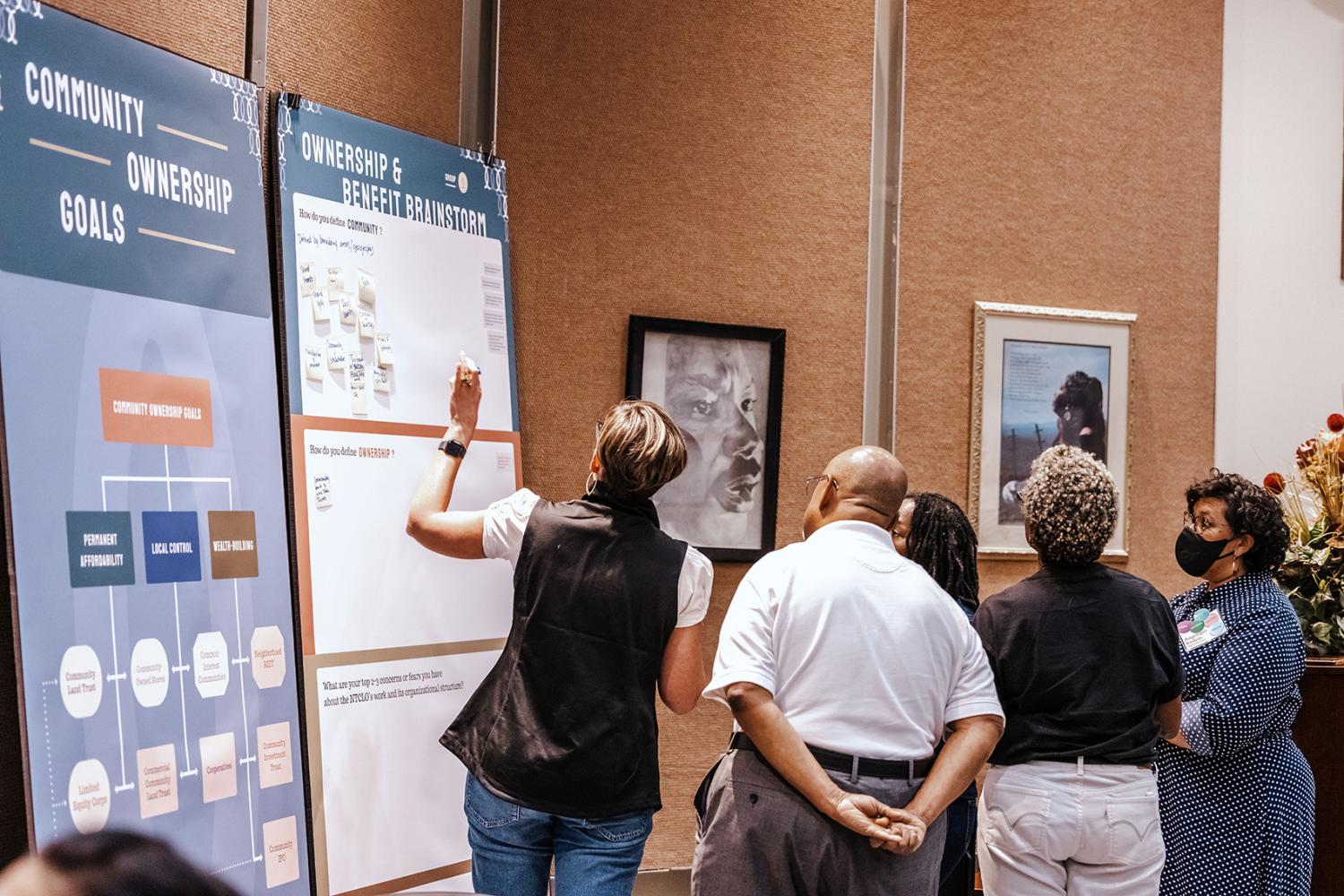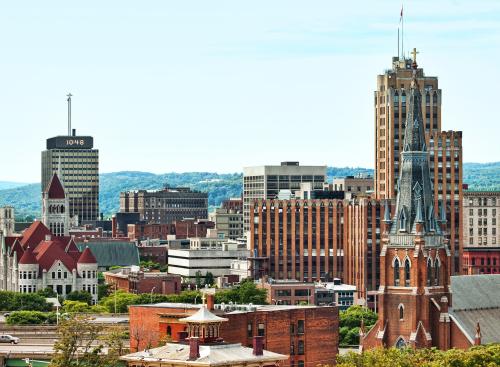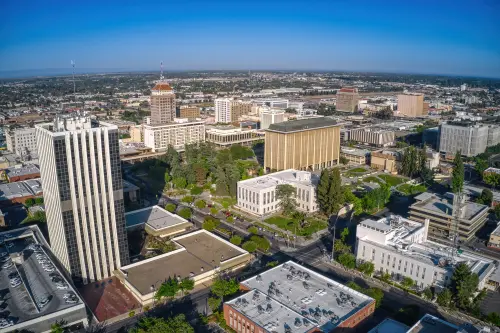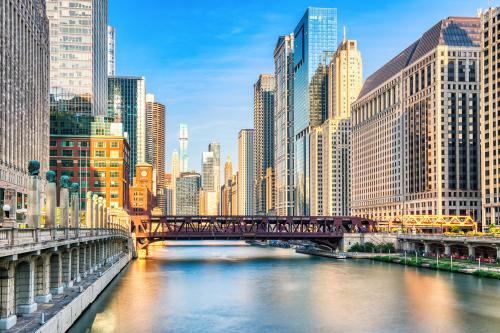Placemaking Postcards is a blog series from the Bass Center for Transformative Placemaking at Brookings where policymakers and practitioners guest-author promising placemaking efforts from across the U.S. and abroad that foster connected, vibrant, and inclusive communities. In line with the principle tenets of placemaking, the goal of the series is to recognize the community as the expert, highlight voices from the field, and to create a community of learning and practice around transformative placemaking.
The Greenwood District of Tulsa, Okla. was once a thriving hub of Black culture and prosperity that was dubbed “Black Wall Street.” But in 1921, a racist white mob tore through the community in one of the most destructive episodes of racial violence of America’s past. Over two days, generations of hard-won successes were systematically destroyed, leaving physical and psychological wounds that still linger today.
Greenwood rebuilt itself after the race massacre without help from the government, only to be consistently targeted in subsequent decades by policies such as redlining, federal highways that carved through the neighborhood, and eminent domain that took people’s homes for less than market value—compounding barriers that illustrate structural racism’s lasting impact. Today, Greenwood and the greater North Tulsa area is still a majority-Black community in a city that is 60.1% white and 14.6% Black. Yet after over a century of marginalization and disinvestment, the poverty rate for North Tulsa is 20.1% higher than South Tulsa, and home and business ownership rates are enduringly low.
In August 2021, as part of efforts to rectify these injustices, Tulsa Mayor G.T. Bynum committed to transferring 56 acres of publicly owned undeveloped land in Greenwood to facilitate community ownership of real estate. Greenwood residents and the Tulsa development authority, known as PartnerTulsa, embarked on designing a governance model and development entity to implement a community-driven development plan for the land, with the mission of driving equitable economic mobility, facilitating community ownership of real estate, and restoring Black Wall Street’s legacy.
Traveling through time to understand the roots
After news of the Greenwood land transfer, the community coalesced around a locally led process to develop an equitable development plan for the property. The Opportunity Accelerator (an initiative that supports local governments in their efforts to promote economic mobility and reduce racial disparities) partnered with the Haywood Burns Institute and Radical Futures (founded by the author of this piece), to convene a diverse, 31-member community governance workgroup to co-create the community-driven economic development plan.
When facilitating the community governance workgroup, we employed the methodology of radical imagination, which seeks to ground communities’ present in an understanding of its historical harms, while simultaneously centering community aspirational visions for a future that is unburdened by today’s constraints. By traveling through time to link past, present, and our desired future, radical imagination lets boundless possibility fuel pragmatic strategy.
As part of this process, the community governance workgroup first discussed the 1921 devastation of Black Wall Street—both the physical violence enacted and lingering trauma still felt by descendants—as well as Greenwood’s resilience over a century of struggle to reconstitute their cultural and economic epicenter. Black Tulsans value keeping the heritage of the area, and enshrined this in the final community ownership plan through the assertion: “We are the keepers and guardians of our culture as Black Tulsans, our legacy, and our community, connecting this generation to the next.”
Reckoning with this past equipped the workgroup to envision a radically different 2030, where their community thrives through ownership and agency. By using speculative futures tools such as design fiction, the community envisioned a bustling, sustainable hub with Black-owned housing and businesses circulating dollars locally to build inclusive wealth while welcoming diverse neighbors.
With this future as their guide, the community governance workgroup embarked on a listening tour to align this vision with the priorities of the broader Greenwood community. They conducted 145 surveys and 54 interviews, aiming to make complex ownership concepts digestible through relatable scenarios highlighting outcomes such as a community center, land trust, and grants that assist local entrepreneurs.
Residents’ values helped the workgroup develop five key principles to undergird future development:
- Honor the past. Residents expressed the importance of honoring the history and culture of Greenwood by uplifting Black businesses, entrepreneurs, and community organizations. Preserving the essence and legacy of the community is important.
- Black wealth is more than money. They made it clear that the definition of “Black wealth” goes beyond just money and assets—it means equality, opportunity, independence, legacy, and passing down knowledge and resources to future generations.
- Development without displacement. Keeping existing residents in Greenwood and preventing displacement through equitable, inclusive development are priorities, while also balancing growth.
- Relationships before real estate. Effective community engagement requires relationship-building through consistent, patient outreach that meets people where they are and maintains open communication to establish trust.
- Reduce friction. Systemic barriers around access to capital, education gaps, restrictive policies, and lack of trust must be addressed to increase entrepreneurship, ownership, and build generational wealth.
As the group visited potential futures unencumbered by today’s limitations, a North Star emerged: Equitable development will only unfold through participatory governance that places the Greenwood community at the helm.
Seeking wisdom from Black-owned real estate initiatives
To deepen their understanding of community ownership models, select members of the workgroup embarked on “field trips” across the country to connect with initiatives in three neighborhoods pioneering community-led development: Russell: A Place of Promise in Louisville, Ky.; Jane Place Neighborhood Sustainability Initiative and People’s Housing+ in New Orleans; and Hill CDC in Pittsburgh. We also engaged with scholars and experts in the field to better understand community ownership models, drawing from a 2021 Brookings report to learn about different models working nationwide.
In dialogue with changemakers and residents, five key insights emerged as central for realizing community priorities in structuring, funding, and governance approaches:
- Move at the speed of trust. Trust-building requires patient engagement between organizations, local government, residents, and partners.
- Find the right mix. Community ownership models can allow both existing residents and newcomers to participate in and benefit from community growth. Market-driven development and communal ownership structures should coexist through a balanced, locally tailored approach.
- Community input is integral. Residents must direct implementation priorities, not just provide periodic consultation. Co-stewarding change together is crucial for aligning investment with community vision.
- Seek sustainable funding sources. Maintaining financial resilience without replicating extractive capital relations requires a diversity of private, public, and philanthropic funding streams that balance autonomy with accountability to community interests.
- Governance sets the stage. An intentional governance model rooted in resident representation and democratic selection helps ensure community-grounded decisionmaking carries forward as the driving purpose over time.
These lessons reinforced the community’s conviction that advancing inclusive development centered on healing and empowerment requires patience, commitment, and participation from all partners united behind community authority over the process.
Planting seeds for a just revival
Armed with community insight and knowledge from walking the path before, the workgroup synthesized their learnings into a blueprint for the future: From Roots to Fruits: Growing Black Prosperity in Greenwood. The report speaks directly to future decisionmakers and stakeholders, and details recommendations while unveiling a bold, community-authored vision for equitable development.
These recommendations include the establishment of a community development corporation (CDC) as the overarching legal structure to execute the vision. The CDC would lead and manage development of the 56 acres, with strong community involvement in its governance through set minimums of board seats and advisory councils that represent residents, elders, and community-based entities.
By walking backward from an unconstrained, radically reimagined future to the pragmatic steps needed today, the community governance workgroup laid out a visionary roadmap for restorative justice grounded in community imagination. Their priorities offer a template for participatory planning centered in equity and self-determination.
The Brookings Institution is committed to quality, independence, and impact.
We are supported by a diverse array of funders. In line with our values and policies, each Brookings publication represents the sole views of its author(s).






Commentary
How Tulsa, Oklahoma’s Greenwood District is reimagining community ownership of real estate to restore Black Wall Street
March 11, 2024